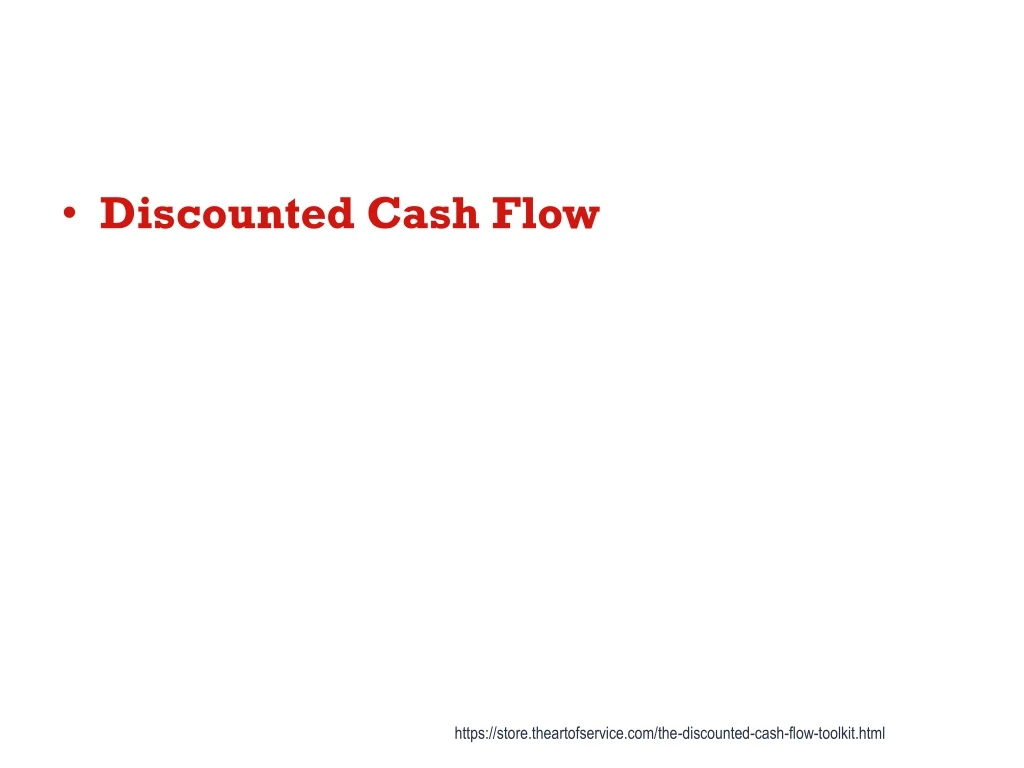


One of these easier ways to achieve this goal of finding the cash flow growth is to look at analysts’ predictions from your favorite website, or you can look back at past numbers and project those forward. Remember, we humans are terrible at predicting the future, so any number you choose is an estimate, and don’t get obsessive about the “perfect” number for any of these inputs. Looking at the past growth rates continues as one of the ways I like to predict the future of cash flows and project those into the future if I feel those rates remain reasonable. So, when testing our DCF models, staying as reasonable as possible is always best. The growth rates for cash flows and terminal rates remain the two most sensitive parts of the DCF. Therefore, we must remain thoughtful about our inputs as they can substantially change our DCF valuations. We will use the terminal rate to determine the final value of the DCF.īefore continuing, any DCF remains sensitive to any inputs we enter, especially the growth, discount, and terminal rates we decide upon. The discount rate that we will need to discount those future cash flows The growth rate of the cash flows into the future The different rates we are going to need are: To perform a discounted cash flow or DCF as it will be known going forward, we need to start with some numbers or assumptions. Now that we understand the discounted cash flow model let’s discuss discount rates and other inputs needed to calculate a discounted cash flow. If the discounted cash flow results in values above the company’s current market value, the company is undervalued and could generate positive returns. The neat part of using these models is that once you arrive at your value, you can determine whether the company remains undervalued or overvalued. The model we refer to as a discounted cash flow uses discount rates to discount those future cash flows back to the present-more on the topic in a moment. It sounds complicated, but it isn’t think of it this way: the value of $100 in the future equals less today because inflation causes money to lose future value. The value calculation comes from projecting the future cash flows into the future and then discounting those cash flows back to the present to give us a value today for those future cash flows. DCF analysis attempts to figure out the value of an investment today, based on projections of how much money it will generate.”Ī discounted cash flow model values everything from Walmart to a person’s home financial analysts use these models to calculate the intrinsic value of just about anything with a cash flow, i.e., bonds, buying new equipment, or valuing Walmart. “ Discounted cash flow (DCF) is a valuation method used to estimate the value of an investment based on its future cash flows. Limitations of the Discounted Cash Flow Valuation.
DISCOUNTED CASHFLOWS HOW TO
How to Find the Rates Needed to Perform a DCF.

Using cash flows as an estimator of a company’s value remains a better way to go than earnings, as earnings have the ability to be “adjusted,” where cash flows are the cash left over for reinvestment or returning value to investors. In today’s post, we will show you once you understand the different components and how to put together the model, it is a matter of dropping in the values and out pops the valuation. Using a DCF remains the main method analysts use throughout finance, and some think using this type of valuation remains far too complicated for them. Using a DCF continues as one of the best ways to calculate a company’s intrinsic value. Discounted Cash Flow (DCF) valuation remains a fundamental value investing model.


 0 kommentar(er)
0 kommentar(er)
